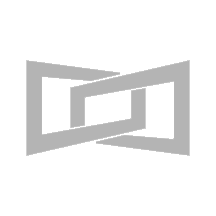对话IP人 | FICPI主席:原研药和仿制药企业将迎变革
编者按:
Editor's note:
本期“对话IP人”栏目邀请到国际知识产权律师联合会(International Federation of Intellectual Property Attorneys,FICPI)主席,加拿大迪纬律师事务所(Deeth Williams Wall LLP)创始合伙人Douglas N. Deeth先生。Doug Deeth拥有40余年知识产权诉讼经验,对于加拿大药品专利链接制度有着独到的见解。本期话题主要包括:加拿大药品专利链接制度变革、专利挑战诉讼策略以及影响加拿大专利药品价格的因素等。
In this edition of the "IP One on One" column, Mr. Douglas N. Deeth, President of the International Federation of Intellectual Property Attorneys (FICPI) and Founding Partner of Deeth Williams Wall LLP, Canada, will have a dialogue with IP Lead on such topics as changes to the pharmaceutical patent linkage system in Canada, litigation strategies for patent challenges, and factors influencing the approval and sale of patented medicines in Canada. Doug Deeth has nearly 40 years of experience in intellectual property litigation, and has unique insights into the Canadian patent linkage system.
Q
知产力
知识产权新媒体
A
Doug Deeth
FICPI主席
Q1
知产力了解到,您在化学与制药领域有着非常丰富的诉讼经验,见证了加拿大药品专利链接制度的诞生与发展。在您看来,加拿大药品专利链接制度经历了哪些重要的变革?
With your rich litigation experience in the field of chemistry and pharma and being a witness of the birth and development of the pharmaceutical patent linkage system of Canada, what big changes do you think the patent linkage system in Canada has experienced?
A1
1993年,专利链接法规在加拿大生效。在此之前,加拿大有两种不同的制度影响仿制药的销售。当我开始执业时,我们就有法律允许专利强制许可。这种制度允许加拿大仿制药公司快速的成长。在这些法律的支持下,有两家非常大的仿制药公司在加拿大发展起来。
The linkage regulations came into force in Canada in 1993. Before that, there were two different systems that affected the sale of generic drugs in Canada, that I had experience with. When I started practicing, we had laws that allowed for compulsory licensing of patents. That system allowed Canada's generic industry to grow very quickly. With the assistance of these laws, two very large generic companies developed in Canada.
从20世纪80年代中叶开始,加拿大取消了专利强制许可制度。那些想要进入市场的仿制药公司,必须进行专利检索,判断他们要投入市场的产品是否侵害任何现有专利。如果认为是安全的,仿制药公司就会将药品投放市场。然而,品牌药公司对于仿制药公司的上述举动并不知情,仿制药突然出现在市场上,必然导致一些非常大的专利侵权诉讼的出现。
Then starting in the middle of the 1980s, that system of compulsory licensing disappeared. Generic companies that wanted to come on the market had to conduct their own patent searches, and had to decide whether or not the product they wanted to market was going to infringe any existing patents. If it thought to be safe to market a generic product it would do that. The brand name company did not know what the generic manufacturers were planning to do, and generic products would appear on the market, unannounced, resulting in some very big patent infringement litigation.
1993年,加拿大第一部专利链接法规生效。其中最主要的变化是,仿制药生产商必须通知品牌药公司他们正在寻找特定的仿制药品的上市许可,并解释为什么被品牌药公司列出的专利是无效的或者不会被侵权。最初,该法规为仿制药与品牌药解决是否存在有效专利侵权设定了30个月的批准等待期。在这30个月的时间里,即使仿制药已经得到了监管部门的批准,它仍不能上市。这30个月的时间后来被缩短到了24个月。
In 1993, our first linkage regulations came into force. One of the most significant changes was that the generic manufacturers had to give notice to the brand name companies, saying that they were seeking approval of a specific generic product and explain why the patents relating to that product that had been “listed” by the brand name company were not valid or not infringed. Initially, there was a period of about 30 months, where the generic and the brand would fight over whether or not there was any infringement of any valid patent. During that 30-month period, the generic product was kept off the market, even if it had been approved by the regulatory authorities. The 30 month period was later reduced to 24 months.
加拿大的制度本意是与当时美国的制度不同的。美国的专利链接制度规定:仿制药进入市场,需要通知品牌药“我们要进入市场”,这种通知是一种拟制侵权行为,将会导致专利侵权诉讼。而加拿大的制度不认定仿制药公司的通知行为为一种侵权行为,而被认为是品牌药公司提出的延迟仿制药上市批准的请求。
Canada’s system was intended to be different from the system that was already in place in the United States. The system in the United States was a system where a generic planning on entering the market would give notice to the brand name company saying "we're coming on the market". That notice was an act of infringement, and resulted in patent infringement litigation. In Canada, the system was not an infringement action, but a request by the brand name company to delay the regulatory approval of the generic.
加拿大制度与美国制度之间产生差异的原因在于,加拿大本意是设置一个非常简洁的体系,快速答复仿制药企侵权问题。起初,这一项制度实施成功,侵权案件也相对简单。然而,在过去的25年,不管是对于仿制药还是对于品牌药,诉讼都变得更加复杂、更加昂贵,它也不再是原本那个简单的诉讼程序了。
The reason for this difference between the Canadian and US systems was that Canada intended to implement a very simple system, that would give a quick answer to the question of infringement. At first, this succeeded, and cases were quite simple. However, over the past 25 years, the litigation became much more complex and much more expensive, both for the brand and for the generic, and was no longer the simple proceeding that it was intended to be.
例如,1993年我接手的第一个专利链接的案子,客户花费了大约两万五千美元。这个客户感觉非常昂贵,因为这本该是一个非常简单的程序。但是到了2016年,同样的案子需花费50万到70 万美元。
As an example, the first case that I did under the NOC Regulations in 1993 cost my client about 25,000 US dollars. The client thought that was very expensive, because this was supposed to be a very simple process. But by 2016, the typical case was costing between 500,000 and 700,000 US dollars.
加拿大的专利链接制度最近的一次修改是在2017年9月,将简洁的诉讼程序转变成基于拟制侵权的全面专利诉讼。这次的修改使得加拿大的制度更加接近美国的制度。
The linkage regulations were recently amended in September,2017 to convert the simple process to a full patent action based on quit timet infringement. The amendments bring the Canadian system closer to the US system.
Q2
随着诉讼复杂程度的提高和成本的增加,加拿大品牌药企业的保护意识是否在逐渐增强?新药的出现是否会导致审判难度加大?
As the litigation are becoming much more complex and much more expensive, is the protection awareness of brand name companies becoming stronger? Will the emergence of new drugs lead to greater difficulty in trials?
A2
这些问题很好。造成诉讼的改变有几个原因。
These are very good points. There are several reasons for this change in the litigation.
我认为最重要的一点原因是品牌药的市场价值的变化。例如,奥美拉唑,加拿大市场每天的销售额约为100万美元。所以,试图保护这个市场的品牌药企每天花费五到一万美元的律师费,这并不令人意外。这是第一点。
I think the most significant thing is the value of the market to the brands. For example, for a product like Omeprazole, the Canadian market was about one million dollars a day. So a brand trying to protect that market did not worry about spending five or ten thousand dollars a day on legal fees. That's the first thing.
其次,我认为是更加激烈的竞争。25年来,一些基础药物被大规模仿制,同时仿制药企更加积极地寻找新的仿制对象,并向原研药发起专利无效“攻势”,而不再像20年前一样坐等专利到期。
The second thing I think is that there is more competition. In 25 years, some of the basic drugs have been genericized, and the generic drug companies are becoming a little bit more aggressive in their searches for new products, and they're going after drugs and attacking patents in more difficult cases, rather than waiting for these patents to expire as they might have done 20 years ago.
另外,药品研发技术以及保护这项技术的专利正变得越来越复杂。25年前,我的第一个案子涉及的主要争议是某一特定药物是否经过特定的生产过程生产出来。这是一个相对简单的案子。而最近我做的一个案子是涉及到的争议某一片剂型药物里的活性成分是否有特定的粒径。粒径非常小,在此之前没有人测量过片剂中颗粒的大小。因此,需要引入专家证人研发新方法来测量片剂中的颗粒大小,这比我们25年前处理的案子要复杂得多。
And the third thing is that the technology and the patents protecting that technology are becoming much more complex. When we were litigating 25 years ago, the first case I had was whether a particular drug was made by a particular process. It was a fairly simple case. The most recent case I did involved a determination of whether a drug, when it ended up inside a tablet, had a particular particle size. It was very small particle size, and nobody had ever measured particles that small in a tablet before. So we had expert witnesses who developing new methods for measuring the size of the particles inside the formulated tablet. It was a much more complex case than those we had handled 25 years ago.
Q3
加拿大仿制药和品牌药的平衡是怎样的?请您结合您代理的案件,介绍一下加拿大药品专利挑战诉讼策略。
What is the balance between the brand name companies and generic companies in Canada? Could you introduce the pharmaceutical patent challenging strategies in Canada, based on your practices?
A3
在加拿大有两个行业组织,一个代表大多数品牌药公司,加拿大创新药, 一个代表大多数仿制药公司,加拿大仿制药协会。这两个组织都会告诉你,这个制度是不平衡的,是偏向另一边的。
There are two industry organizations in Canada. There is one organization that represents most of the brand name companies, Innovative Medicines Canada, and there's another organization that represents most the generic companies, Canadian Generic Pharmaceutical Association. Both of those organizations will tell you that the system is not balanced but favors the other side.
所以这可能意味着制度相当平衡。我认为有时候有些判决是有利于品牌药的,有些判决是有利于仿制药的。在过去的25年里,我的大部分工作与仿制药公司有关,但我们也有品牌药客户。我认为加拿大的药品保护制度能够维持仿制药企与原研药企的相对平衡。同时,我认为这个制度使药品价格保持在一个合理水平,并且加拿大市场对于仿制药公司依然具有很强的吸引力,有很多仿制药公司想进入加拿大市场,其中不仅有来自加拿大的,还有来自美国、印度和中国的。
So that probably means it's fairly equally balanced. I think from time to time there are decisions that are in favor of the brands, and then there are decisions that are in favor of the generics. Most of my work over the last 25 years has been for generic companies. But we do have brand clients as well, and I think the system is fairly well balanced. And I think it keeps the prices at a reasonable level, and the Canadian market is still a very attractive place for generic companies - we have many generic companies from not only Canada, but companies from the USA, from India, and from China, that want to come into the Canadian market.
对于想要进军加拿大仿制药市场的药企而言,需要采取的策略与其进入其他国家需要采取的策略并无太大差别。显然,药企必须进行专利检索并获得专利侵权和有效性方面的意见,并且药企需要查阅加拿大法院和其他地方关于同一专利的决定。
The strategy for generics in Canada is not very different from the strategy that would be adopted in any other country. You obviously have to do your patent searches and get opinions on infringement and validity. You have to review the decisions of Courts in Canada and elsewhere about the same patents.
最大的不同在于,我们的专利链接法规所强加的程序。在通常的专利侵权诉讼中,专利权人必须解释为什么仿制药侵犯了其专利权。在加拿大专利链接法规下的诉讼中,仿制药公司必须对品牌药公司如何解释专利作出预测,解释为什么仿制药没有侵犯专利权,并说明为什么专利是无效的,这些步骤要在品牌药公司对这些问题作出说明之前完成,仿制药公司需要更加灵活地处理这些问题。
The big difference is in the process that has been imposed by our linkage regulations. In a normal patent infringement action, the patentee has to explain why the generic infringes the patent. Litigation under the linkage regulations in Canada, the generic has to anticipate what the brand will say about what the patent means, and explain why the generic product does not infringe the patent, and why the patent is invalid, before the brand says anything about these issues. The generic really has to be a little bit more flexible about how it deals with these issues.
Q4
您认为加拿大如何能够更好地利用专利延长和专利挑战来实现仿制药和品牌药之间的动态平衡?
What do you think Canada could do to make the most of patent extension and patent challenge to realize the dynamic balance between generic and brand name drugs?
A4
目前在加拿大有三种制度保护品牌药。
There are currently three systems that protect brand name products.
首先是数据保护制度。这个制度适用于由品牌药公司开发的用于获得新分子新药批准的数据。并且不论是否存在专利权保护,这个制度都给予新药专利权人8年的市场独占期。
The first is the data protection system. That applies to data developed by a brand to get approval for a new drug with new molecule. And that gives the patentee eight years of exclusivity, whether or not there's any patent protection at all.
其次,我们拥有专利保护,这不仅适用于新分子,还适用于新剂型,新工艺,多晶型物,对映异构体等。
Then we have the patent protection which applies not only to new molecules but to new formulations, new processes, polymorphs, enantiomers, etc.
根据加拿大基于CETA(我们与欧洲的自由贸易协议)需要履行的义务,我们推出了专利期延长制度(Certificate of Supplementary Protection, CSP)制度,对专利到期后受合格专利保护的新药提供最多2年的保护。
Under Canada’s obligations to CETA, our free trade agreement with Europe, we have introduced a supplementary protection certificate, which provides a maximum of 2 years of protection for new pharmaceuticals that have been protected by eligible patents, after patent expiry. 、
就目前而言,不确定性存在于了解如何授予原研药专利期延长保护,因为加拿大还没有这方面的经验,我们并不知道卫生部是否会非常慷慨地授予补充保护证书。由于这是2017年年底在加拿大刚刚生效的新制度,很难说这个问题的答案是什么。
So I think the uncertainty will be in learning how the supplementary protection certificates will be granted, because we have no experience with them in Canada, and we don't know whether Health Canada will be very generous in awarding these or whether it will be not generous. So it's very hard to say what the answer to that question will be because it's a brand new system that just came into force in Canada at the end of 2017.
Q5
知产力了解到,2017年12月1日,加拿大政府公布了《专利药品条例修正案》征求意见稿。有分析称,该法案将有助于专利药品价格审查委员会(PMPRB)帮助消费者免受药品价格过高的困扰。对此您如何看待?在您看来,影响专利药品的因素有哪些?
It is reported that the Canadian government released the proposed amended Patented Medicines Regulations on December 1st, 2017. Some analysists said this amendment will help Patent Medicine Prices Review Board (PMPRB) to keep consumers from paying excessively high prices. What do you think about it? What factors do you think influence price of the patented medicines?
A5
加拿大专利药品价格审查委员会(PMPRB)已存在多年。PMPRB批准的药品价格用于品牌专利药,并且这个价格是在 PMPRB考察了美国及法国,德国,意大利,瑞典,瑞士和英国等六个欧洲国家的同类药品价格后设定的。
The PMPRB has been in existence for many years. Drug prices are approved by the PMPRB for patented brand name products, and the prices that are set after the PMPRB looks at the prices of the same drug in about seven different countries, including the United States and other six European countries - France, Germany, Italy, Sweden, Switzerland and the UK.
这些品牌药要做的是确保他们首先在美国拥有定价(这意味着产品在进入加拿大市场之前必须首先进入美国市场),因为加拿大的药品价格通常介于美国和欧洲的药品价格之间。如果一个品牌药公司将药品首先投放到了加拿大市场,那么PMPRB将无法对美国药品价格进行考察,而只会根据欧洲国家的药品价格设定加拿大市场的药品价格,这将导致这些品牌药在加拿大市场上的价格低于其首先将药品投放到美国市场上的价格。反之,如果美国品牌药定价先于加拿大,PMPRB将会对美国市场药价进行考察,从而使得加拿大市场药价较高。征求意见稿包括了将美国排除在价格考察之外。
What the brands will do is to make sure that they have the price set in the United States first, (meaning the product has to enter the US market before it comes into the Canadian market) because Canadian drug prices are usually somewhere between the United States prices and European prices. If a brand puts the product on the market in Canada before the United States, there is no United States price that the PMPRB can look at to set the Canadian price, and so the brand will likely get a price in Canada that is lower than it would be if the product was marketed in the USA, because the PMPRB will be able to look at European prices only. If the US price is set before the Canadian price is set, the Canadian price will likely be higher because the US price is taken into account. The proposed amendments include removal of the US from the price comparison.
当该品牌药公司要求获得批准的价格时,它必须向PMPRB提供一些关于该药品开发的成本信息。品牌药公司抱怨药品开发的成本并没有被全部考虑在内,但我认为,总体而言,加拿大的品牌药价格与美国相比是真实的。
When the brand makes a request for an approved price, it has to give the PMPRB some information on how much it cost to develop the drug. One complaint that the brands have is that the full cost of developing the drug is not taken into account, but I think that, in general, Canadian prices for brand name drugs are realistic when compared to the prices in the United States.
当仿制药上市时,其价格按品牌药价格的百分比来定。第一种进入市场的仿制药价格通常被设定为品牌药价格的50%到75%。当第三种仿制药上市时,其价格已降至品牌药价格的25%。这与五年前的价格相比有所下降,当时,第三种仿制药的售价通常会达到品牌价格的一半左右。
When a generic comes on the market, the price is set as a percentage of the brand price. The first generic to enter the market typically gets between 50% and 75% of the brand price. By the time the third generic comes on the market the price is down to 25% of the brand price. That's a reduction from prices of five years ago when the third generic would typically sell for about 50% of the brand price.
在加拿大保持低药价的最好办法是使第二和第三种仿制药更容易进入市场,因为一旦他们进入市场,第一种仿制药的价格就会下降。
The best way to keep drug prices low in Canada is to make it easier for the second and third generics to come on to the market, because as soon as they come on the market, the prices of the first generic drug will come down.
在旧的专利链接制度下这是可以完成的,因为这个制度非常实用。如果有几家仿制药想要进入市场,通常品牌药和仿制药中的一家会有一场争斗,而如果在第一次的争斗中专利无效的话,那么这个品牌药通常会放弃跟其他仿制药的争斗,因此将有五六种仿制药进入市场,从而保证低的价格。
This was accomplished under the old linkage regulations. It was a very practical system. If there were several generics that wanted to get on the market, there would often be one fight between the brand and the one of the generics, and if the patent was held invalid in that first fight, the brand often gave up against everybody else and those five or six generics would enter the market all at the same time; that kept the prices quite low.
我们还不知道在新制度下会是怎样。我认为,PMPRB是为品牌药定价的一种可行的方式。由于第二和第三种仿制药将以比品牌药低得多的价格上市,使得仿制药将保持低价,而首个进入市场的仿制药将不得不降低价格来竞争。但有些人认为,加拿大的仿制药价格仍然高于美国。
We don't know yet how that will work under the new system. I think the PMPRB is a realistic way of setting the price for the brand. The generic prices will be kept low because the second and third generics will come on the market at a much lower price than the brand and the first generic will have to lower its prices to compete. But some people say that we still have higher generic drug prices in Canada than in the United States.
当然,品牌药的初始定价取决于药物研制成本和市场。有些药物存在多种不同的潜在适应症。制药公司将根据开发成本和可能的销售价格来决定获得哪些适应症的批准。如果针对的适应症还没有其它药可以适用,那么针对该适应症的药品的价格将比针对其它适应症状的价格要高。
Of course, the initial pricing for the brand depends on the cost of developing the drug and the market for it. There are drugs that have several different potential uses. Drug companies will decide on which use to get approval for by considering the cost of development and the likely selling price for the drug. Drugs useful for indications for which there are no approved competitive products may sell for higher prices than the same drug would get if sold for a different indication.
药物的定价不仅取决于研发成本,也反映了人们愿意为此付出的价格。举一个简单的例子,如果你有一种救命药,能让人多活几个月,它的售价会比治疗头痛的药价格高得多。因此是供给与需求影响了药品的市场价格。如果你有一种新的降血压药,你将面临市场上其他降血压药的竞争,以至于你的药品的价格不会高于比其他同类药品的价格。
The pricing of a drug is a reflection, perhaps, of the cost of research, but it's also a reflection of how much people are willing to pay for it. If you have a life-saving drug that is going to keep somebody alive for several months, it's going to sell for much higher price than a drug that treats a headache. So it's really supply and demand that affects the market price for the drug. If you have a new blood pressure drug, you will have competition from many drugs on the market that will control blood pressure so you can't make your product much more expensive than those.
Q6
相较于美国、韩国,加拿大对于首仿药并未设置市场独占期。您认为,首仿独占期的设定有何意义?
Unlike the situations in the United States and South Korea, Canada doesn't provide for market exclusivity for first generic drugs. What is the significance of exclusivity of first generic drugs?
A6
在美国,市场独占权的设计目的是鼓励仿制药公司去挑战橙皮书中专利的有效性,从而鼓励仿制药进入美国市场。
The market exclusivity in the United States is designed to encourage generic companies to challenge the validity of patents listed in the Orange Book, thus encouraging the entry of generic drugs into the US market.
美国的制度有两个问题,其一是:因为如果你率先递交了新药简约申请ANDA,你会获得很大的优势,然而你的ANDA可能并不完善,这可能会导致第一种仿制药的批准和上市推迟。这同样意味着,其他所有仿制药的推出都将延迟,因为在第一种仿制药上市6个月后,这些仿制药才开始销售他们的产品。
There are two problems that I see with the US system. One is, because there is a big reward if you get your ANDA filed first, that ANDA may not be as well prepared as it should be, and that may result in a delay in the approval and launch of the first generic product. That also means that there is a delay in the launch of every other generic, because those generics cannot start selling their product until after the first generic has been on the market for 6 months.
其二是,在美国,给予第一个仿制药公司的独占权可能会遭到滥用。这一独占期与它在美国市场推出产品的日期有关。有时,在与品牌药公司达成的和解协议中,仿制药公司愿意推迟其产品的推出时间,因此其它仿制药要等到独占期满或被终结才能投入市场。
The other problem is that the exclusivity given to the first generic to file in the United States can be subject to abuse. The first generic is entitled to this period of exclusivity, that is tied to the date it launches its product in the US market. Sometimes a generic will agree to delay the launch of its product in a settlement agreement with the brand; this can result in a delay of the launch of other generics who have to wait until the exclusivity period expires or is terminated.
在加拿大, 成为第一个仿制药公司的优势是进入市场的第一个仿制药,而不是提出了新药申请的第一个仿制药公司,将获得更高的价格,。有时候第一个仿制药公司也会通过与品牌药的诉讼和解上市,和解协议要求品牌药继续与其他试图进入市场的仿制药进行诉讼。
In Canada, the reward for being the first generic is to get the higher price awarded to the first generic to enter the market, not the first generic file its application for approval. Sometimes the first generic will get on the market by settling litigation with the brand, under an agreement that requires the brand to continue the fight against other generics who are trying to enter the market.
我们曾遇到一些案子,其中有三、四个仿制药公司的案子被合并审理了,并且第一个提交申请的仿制药公司要求法官推迟对其他仿制药公司的判决,从而给第一个仿制药公司首先进入市场的机会。目前,法院已经驳回了这项请求。
We have had a couple of cases in which had three or four generics have had their cases all heard together by the Court, and the first generic to file has argued that the judge should delay his decisions on the other generics to give the “first” generic a chance to enter the market first. So far, our courts have rejected that argument
Q7
近年来,中国药企纷纷拓展海外业务。您认为,中国企业进入加拿大市场的应当如何防范知识产权侵权风险?
For the past several years, many Chinese pharmaceutical companies are actively expanding their overseas business. How should they prevent the risk of intellectual property infringement when they enter the Canadian market?
A7
我认为有两三件事情是必须做的。
I think there are two or three things that have to be done.
首先,加拿大必须被看作一个有着不同规则,与美国和欧洲不同的市场。加拿大的专利权利要求通常与其他国家的不同。对于美国和欧洲,企业一般会进行专利尽职调查,我认为在加拿大也要这样做。
First of all, Canada has to be looked at as a separate market from the United States and from Europe, with different rules. Often the claims of Canadian patents are different from those in other countries. You would normally do a freedom to operate searches and opinions in the USA and in Europe, and I think you have to do that again in Canada.
然而,我们通常要求我们的客户向我们提供他们从美国或者欧洲获得的意见,然后对这些意见进行审核,并告诉客户这个意见与加拿大的意见是否相同,它是否也适用于加拿大专利,或者告知客户由于加拿大法律的特例,从美国、欧洲获得的意见与加拿大的意见不同。这可以节省大量的时间和成本。
However, we often suggest that our clients give us the opinions that they have from the United States or from Europe, and we can review those and say whether or not that opinion would be the same in Canada, which it will be for many US and Canadian patents, or we can say it will be different for reasons that are unique to Canadian law. This can result in significant savings of time and cost.
另一个需要注意的事情是:你不应该总是相信你的供应商或者客户告诉你的产品或者其中的成分。
Another thing that has to be carefully considered: you should not always believe what your supplier or client tells you about the product or the ingredients in it.
我们曾碰到过这样的案例:交付给客户的产品并不是所指定的产品,要么含有不应该有的成分,要么就是属性或者特征与指定的产品不同。当这些情况在诉讼中出现时,将会非常棘手。
We’ve had cases where the product that is delivered to the client is not what was specified and includes ingredients that should not be there or that have properties or characteristics that are different from those specified. It is very difficult to deal with that when these differences show up in litigation testing.
因此,这不仅要看法律背景和专利,同时也需要仔细审查自己的产品以确保产品无误。
So it's not only a matter of looking at the legal landscape and looking at the patents, but it's also a matter of looking at your product very carefully to make sure that the product is what is supposed to be.
Q8
加拿大的药品专利制度与美国存在许多差异,那么加拿大药品专利制度未来发展会更趋近于美国,还是更多地保留自己的特色?
There are lots of differences in pharmaceutical patent systems between Canada and the United States. Will Canada approach the United States or maintains its own characteristics in the future?
A8
当我开始执业时,Novopharm和Apotex两家公司控制着加拿大的仿制药市场。Novopharm几年前被Teva收购。
When I started my practice, there were two big Canadian generic companies, and the Canadian generic market was limited to those two companies, Novopharm and Apotex. Novopharm was acquired by Teva several years ago.
之后我们有加拿大独特的专利链接制度,在很短的时间内我们拥有了一套独特的加拿大制度和市场。
Then we developed a system under the linkage regulations who was very unique to Canada, and for a short period of time we had a very unique Canadian system and a unique Canadian market.
在过去的20年里,我们看到一些美国和亚洲的仿制药企业进入加拿大市场。
In the last 20 years we have seen several American and Asian generic companies coming to Canada.
去年,我们对我们的专利链接制度进行了修改,使它更像美国的专利链接制度。
We have also had a change in our linkage regulations to make them more like the American system. That just happened last year.
另一个将继续发生的变化是行业的变化。25或30年前,药企要么是只拥有仿制药,要么是只拥有品牌药业务。律所也是如此,一个律所不能分饰两角,如果你为品牌药公司服务,就不能为任何仿制药公司服务。
The other change that's happened which I think will continue is a change in the industry. 25 or 30 years ago you had exclusively generic companies and exclusively brand name companies. Law firms were the same; a law firm would not act for both (if your firm represented a brand name company you would not act for any generic company).
在过去20年,我们看到越来越多的品牌药企收购仿制药企,或者是开展自己的仿制药业务。仿制药企也在开发自己独有的药品,并寻求专利保护。
What we've seen in the last 20 years is that the brand name companies are either buying generic companies or having their own generic divisions, and generic companies are developing their own unique products and seeking patent protection for them.
当品牌药即将失去专利保护时,品牌药公司要么生产他们自己已被授权的仿制版药,要么授权其他仿制药公司或他们自己的子公司来进行生产。因此,品牌药与仿制药之间将会继续融合,并且一个公司往往会同时拥有品牌药部门和仿制药部门。
When a brand name product is losing its patent protection, we often see the brand name companies making its own “authorized” generic versions of the product, or licensing a generic company, sometimes its own subsidiary, to do that. So there will be a continuing convergence of brand names and generics and often one company will have a brand name division and a generic division.
第三个可能发生变化的是品牌药市场本身。品牌药市场是个非常特殊的市场。在多数情况下,当品牌药专利到期后,或者存在市场竞争时,这些品牌药并不会通过降低价格来与仿制药竞争,而是在存在竞争和没有专利保护的情况下仍然试图保持原来的高价。
A third thing may change is the brand name pharmaceutical market itself. It is in several ways a very strange market, because in most cases when patents expire, and competition enters the market, the brands do not reduce their prices to compete with the generics - the prices stay the same - and they try to sell the brand name products at the same high prices even though they have competition and no patent protection.
在某些情况下,品牌药(通常被称为“遗留药”)会被卖给规模较小的公司,这些小公司以原来的高价或提高价格来出售这些药品,虽然其占有的市场份额不大,但却拥有非常高的投资回报率。
In some cases these brand name products (often referred to as “legacy products” were sold to smaller companies who continued to sell them at the original high prices, or even increasing the price, maintaining only a small market share but making very good rates of return on their investments.
这可能在三四年前就开始改变了,当时伟哥的专利要么无效要么就过期。伟哥失去了专利的保护。我认为,辉瑞是加拿大第一家通过降低品牌药价格以匹配仿制药定价的公司。我想我们在未来会看到更多这样的情况。此外,当专利到期后,品牌药似乎更愿意以较低的价格与医院、政府以及其他购买团体签订长期供货协议,从而保持他们的市场份额。
This may have started to change three or four years ago, when the patents on Viagra were held either invalid or expired. Pfizer lost patent protection for Viagra and was, I think, the first company in Canada that reduced its price on the branded product to match the generic pricing. I think we'll see more of that in the future. In addition, as patents are expiring, brands appear to be willing to enter into long term supply agreements with hospitals, governments and other buying groups at lower prices than they offered before in order to keep their market share.
在过去的几年里,遗留药品市场的吸引力降低,因为其提高价格的能力受到了政府对药价进行更为严格审查的影响,同时也受到公众对高药价担忧的影响。
In the last couple of years the market for legacy products has become less attractive, as the ability to raise the prices has been affected by greater government scrutiny of drug prices and public concern over high drug prices.
由于这些变化,即仿制药进入市场使得品牌药价格被迫降低,遗留药品市场吸引力的降低,美国市场药品价格意识的提高,这些都将改变品牌药和仿制药市场。
As a result of these changes, ie the decisions to reduce the prices of brand name drugs when generics enter the market, the reduced attractiveness of legacy products, and greater awareness of drug prices in the US market, we will see changes the marketplace for both branded and generic drugs.
我认为在未来的10年里,当专利到期时,你会看到更多的品牌药降价,同时我们将会有一个市场,至少在完全整合的北美市场,当数据保护,专利和专利期延长期满时,同时销售完全由营销推动的品牌药,和销售相同药物的仿制版。
I think that in the next ten years, you'll see a lot more price reductions on brand name drugs when the patents expire, and we will have a market, at least in North America in which drug companies become fully integrated, selling both brand name drugs with full marketing support and then generic versions of the same drugs when the protections granted by data protection, patents and CPSs expire.
对于一个品牌药来说,通过其仿制药进入加拿大市场要比一个仿制药获得品牌仿制药授权容易的多,这将使得仿制药更难进入市场,除非它们有大量的不同产品投放进市场。而那些只有少数药品种类的仿制药公司,其在市场上的竞争将会越来越困难。
It is much easier for a brand to enter the market with a generic version of its own drug than it is for a generic to get approval of its generic version of the brand. This will make it harder for generics to enter the market unless they have a large portfolio of products to offer to the market. It will be increasingly difficult for a generic with only a small number of products to compete in the marketplace.
Douglas N. Deeth
Douglas N. Deeth先生为加拿大安大略省注册执业律师, 加拿大专利和商标代理人,并有美国专利及商标局 (USPTO) 的代理资格。Doug 是加拿大Deeth Williams Wall律师事务所的创建人之一。Doug拥有三十多年的诉讼处理经验,特别是在化学和制药方面。
Douglas Deeth was admitted to the Bar of Ontario in 1976. He is also a Registered Canadian Patent and Trademark Agent and Registered U.S. Patent and Trademark Agent. Doug is a founding member of Deeth Williams Wall LLP. Doug has more than thirty years of litigation experience. and has particular expertise in chemical and pharmaceutical products and processes.
Doug 在国际评论中被公认为加拿大知名的知识产权律师之一,, 目前担任国际工业产权律师联合会(FICPI)的主席。
Doug has been recognized in several international reviews as one of Canada’s leading intellectual property lawyers.Doug is currently the president of FICPI (the International Federation of Intellectual Property Attorneys).



















